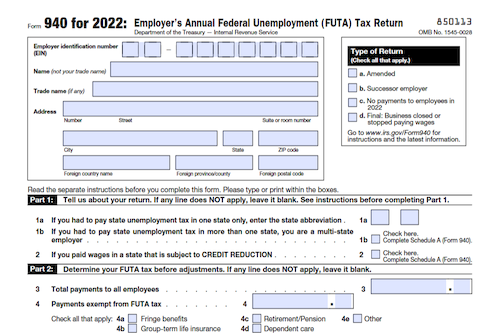Filing taxes can be a tricky process, but it’s important to get it right. With Form 1040, individuals can easily report their income and calculate their expected tax liability.
What is Form 1040?
Form 1040 is the mandatory federal tax return form used by U.S. individual taxpayers to submit their annual income taxes to the Internal Revenue Service (IRS). It includes sections to report income, deductions, and credits in order to determine whether the filer owes any additional taxes or eligible to receive a tax refund. It addresses all types of income, from wages and salaries, to pension payments, Social Security benefits, and capital gains, as well as certain taxes (such as alternative minimum tax and household employment taxes). Depending on a filer’s situation, they may need to complete additional schedules in addition to Form 1040. These include Schedule A, Schedule C, Schedule D, and more, all of which can be found on the IRS website.
IRS Form 1040 – Who Needs to Fill It Out?
Everyone who earns income over a certain threshold must file an income tax return with the IRS using Form 1040: U.S. Individual Tax Return. It can be e-filed or mailed in, and may need to be accompanied by additional schedules and forms depending on the filer’s circumstances. Seniors, nonresident aliens, and those claiming certain credits may need to file different versions of the 1040. Understanding which schedules are required and how to best maximize deductions makes filing easier and quicker.
Step-by-Step: Form 1040 Instructions For Filling Out the Document
Form 1040 is the standard Internal Revenue Service document used by individual taxpayers to file their annual income tax returns. It requires the filing of personal information, such as:
name, address, Social Security number, and number of dependents, as well as specific disclosures of taxable income, wages, salary, taxable interests, capital gains, and other types of income. Depending on personal circumstances, taxpayers may need to file supplemental tax 1040 forms in addition to long-standing schedules related to business income or loss. Completion of the form requires knowledge of filing status, standard deduction, taxable income, additional taxes, and tax credits. Understanding properly how to fill out and submit Form 1040 is the key to compliance with the IRS.
Below, we present a table that will help you understand how to fill out Form 1040.
| Information Required for Form 1040 | Details |
|---|---|
| Name | Individual’s full name |
| Address | Current mailing address |
| Social Security Number | Unique identification number |
| Number of Dependents | Count of individuals dependent on the taxpayer |
| Taxable Income | Includes wages, salary, taxable interests, capital gains, etc. |
| Supplemental Tax Forms | Additional forms based on personal circumstances |
| Filing Status | Status indicating the taxpayer’s situation (e.g., Single, Married) |
| Standard Deduction | Deduction amount based on filing status |
| Additional Taxes | Any extra taxes owed, if applicable |
| Tax Credits | Credits that reduce tax liability |
Do You Need to File Form 1040 Each Year?
Yes! Every year, the Internal Revenue Service (IRS) requires taxpayers to file their annual income tax return with Form 1040, no matter their filing status or income. Form 1040 contains sections that require taxpayers to report on their taxable income for the year to determine whether additional taxes are owed or if the filer will receive a tax refund. It must generally be filed or e-filed by April 15 of each year. However, the IRS also produces several other 1040 forms for taxpayers in certain situations, such as Form 1040-NR for nonresident aliens, 1040-SS for residents of U.S. territories, 1040-PR in Spanish-language, 1040-V for payment of taxes due, as well as schedules like 1040-EIC for Earned Income Credit and 1040-SE for self-employment taxes.
Download the official IRS Form 1040 PDF
On the official IRS website, you will find a link to download Form 1040: U.S. Individual Tax Return. However, to make it easier for you, we are providing the link in our article, which comes directly from the official irs.gov website! Click to download: Form 1040
Sources:
https://www.irs.gov/forms-pubs/about-form-1040
https://www.irs.gov/instructions/i1040gi




